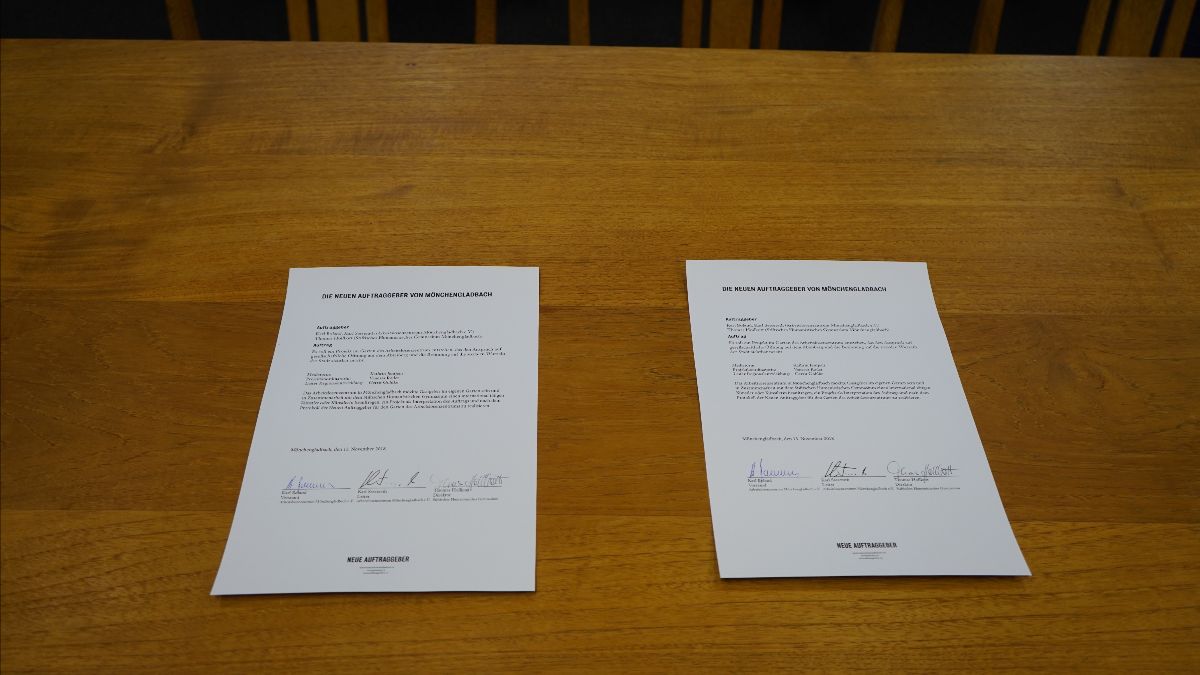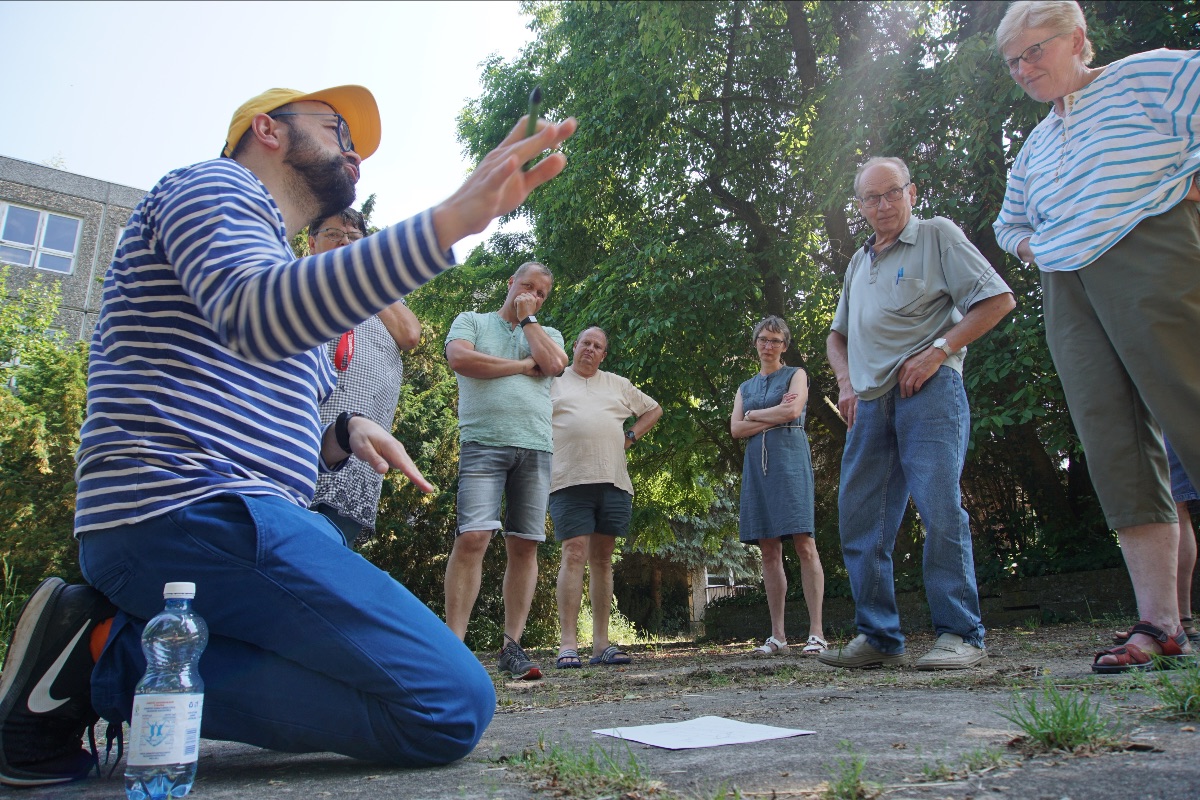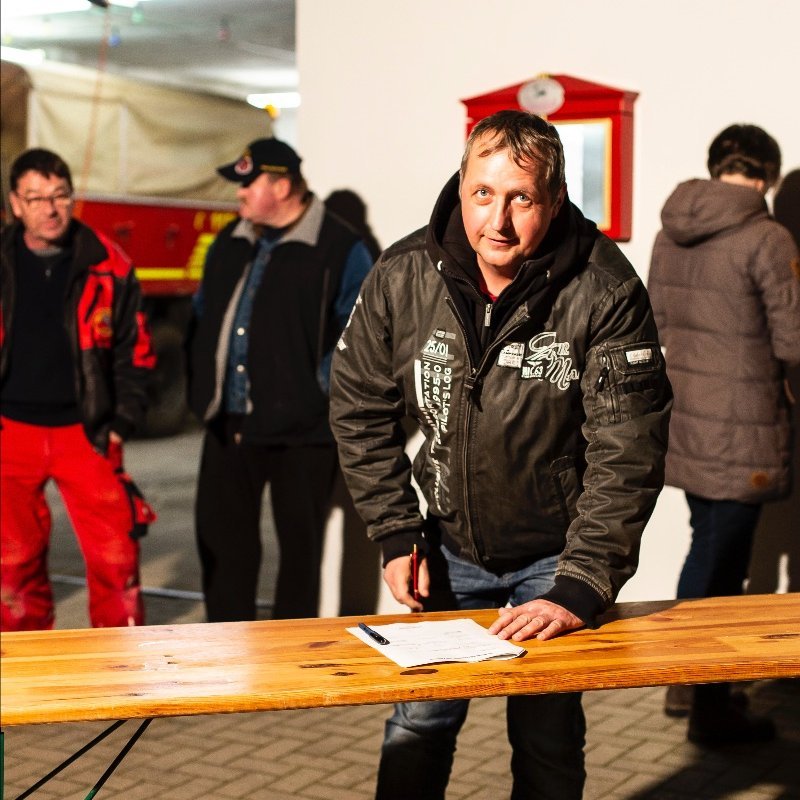What Happens in the Interstices of Art Mediation?
Nora Sternfeld
In her contribution The Commission, Nora Sternfeld considers the work of Heiner Müller in examining the significance of commissioning a work of art. Sternfeld focuses on the practice of the New Patrons of transferring to citizens the power to commission, as well as the mediation of the process and scrutinizes whether these constitute fundamental changes to the system. Whether and how the fulfilment of a commission correlates with the needs and possibilities of art production becomes the central point of her consideration.
Nora Sternfeld is an art mediator and curator. She has been Professor of Art Education at the HFBK Hamburg since 2021. From 2018 to 2020 she held the documenta professorship at the Kunsthochschule Kassel, and from 2012 to 2018 she was Professor of Curating and Mediating Art at Aalto University in Helsinki. She publishes on contemporary art, educational theory, exhibitions, historical politics and anti-racism.
The Commission - What Happens in the Interstices of Art Mediation?
“I don’t know what in the letter was so important to him. Something to do with a mission. Which he had to return, so that others could carry on with his work. Whatever work that might have been.”
Heiner Müller, The Mission
“who can now say what art is meant to be?”
The New Patrons
Three French revolutionaries—by the names of Debuisson, Galloudec, and Sasportas—are given the mission of joining the uprisings in the Caribbean in the name of the Revolution. By the time the three arrive at their destination, however, Napoleon has seized power. So now they have a mission, but the revolutionary sponsors and addressees of that mission no longer exist. Heiner Müller’s play “The Mission”—written in 1979, the text is tinged with bitterness over the reality of life in the GDR in the late 1970s yet persistent in its inquiry—probes the question of whether the utopian vision survives the revolution’s collapse. What happens to the mission now? And how does each of the protagonists interpret it for his or her own benefit, or else true to the cause (and which cause)? How do they insist on a mission that is no longer reviewed, evaluated, executed?
These questions from another time and a country that is no longer will guide me in the following pages as I examine a scheme of the twenty-first century to see what Müller’s—perhaps anachronistic—take on a (com)mission can teach us about the (com)missions of the “New Patrons.” My perspective will be that of a theorist and practitioner of art mediation, a practice that is invariably commissioned and performed on assignment yet, as a critical practice, often proceeds at some distance from or variance with its assigned missions.
1. What is a commission?
With the New Patrons, everything begins with a commission—that is the most obvious observation about heteronomous art, and yet one that the scheme turns on its head: for the New Patrons award commissions not top down, as would be usual, but bottom up. This makes the commission a matter of negotiation in an unwonted way: the projects start out with a group of people who, although they may have only a vague idea of art, verbalize a strongly felt desire to change something about their context, their surroundings, with the help of art. Then mediators come into play who propose an artist, who in turn does or does not receive the patrons’ approval. An art commission, a mission assigned to art, that is to say, is here a matter of negotiation in which the patrons have the last word (as is usual), only those patrons are citizens from all walks of life.
Before we take a closer look at the New Patrons’ projects, let us consider them through the lens of a core aspect: the wishes of the particular patrons and the contractor. A commission, for the one who is commissioned to execute it, is a cause for action, but also a reason to act in ways that sidestep the commission—not infrequently, to use it as an opportunity to do perhaps more, perhaps less than and perhaps something altogether different from simply carrying it out. For if artists did no more than carry out their mission as explicitly stated, little would be done, and certainly no critical art or art mediation. And so a rigorous, an artistic practice is invariably on a second mission that is different from its assignment, an artistic mission that, we might say, also runs athwart its explicit commission; or it takes place in the interstice between a mission and the impossibility of carrying out another mission that in the final analysis it cannot abdicate.
Much of the history of art—most obviously its history before its attainment of autonomy, but needless to say also afterwards, given the reality of the market—is a history of ways of handling commissions. In 1798, for instance, Francisco de Goya was tasked with creating the frescoes in the Royal Chapel of Saint Anthony of La Florida, Madrid; the commission, from King Charles IV, was brokered by the politician and philosopher Jovellanos, who as a state councilor owed loyalty to the king yet was also committed to the Enlightenment. The frescoes show the miracle of Saint Anthony of Padua, the patron saint of the new church, and bring the story into the present. Legend has it that Saint Anthony, in a courtroom in Lisbon, raised a murder victim from the dead so that he could testify and, by giving the names of his actual killers, exculpate his father, who was wrongly accused of the deed, resulting in the latter’s acquittal. On the ceiling of the church, Goya rendered the crowds observing the action so vividly that they could seem more alive than the contemporary beholders. The depiction of the figures—nonchalant and lewd, laughing and whispering, pushing and shoving as they leaned on a painted metal baluster, with some even dangling their feet as they witnessed the miracle—could hardly have been more earthly in the expression of emotions and passions or, in some cases, indifference. The subject itself, in the eighteenth century, also read as an engagement with the errors and miscarriages of justice. And so, at the behest of the king and in less than six months—Goya worked as rapidly as possible in order to create a fait accompli—an Enlightenment-minded fresco came to take up the walls of a Spanish church.
Carrying out a commission at variance with its assigned objective in this manner brings that other dimension of the commission into play, the one Heiner Müller chooses as the point of departure for his play: the commission that does not have—or no longer has or does not yet have—a commissioner or patron propels the creative process along and athwart its assigned mission.
2. Who are the patrons?
What does this imply for a project that is anchored by its underlying commission yet turns its premises on their head?
The classic commissioners of art were the aristocracy and the Church, followed, after what is known as art’s attainment of “autonomy,” by private patrons, museums, foundations, the government. 1 There was, in other words, a concrete relation of power with the patrons on one side, art in the middle, and the audience on the other side. It is this relationship, which encapsulates the power differential in art production, that the New Patrons scheme seeks to dislodge. It defines the New Patrons as follows: “New Patrons are people who want to make positive change. They commission artists to develop projects that respond to urgent questions in their city, town, or village.” 2 Everyone, that is to say, can become a patron who speaks up and articulates a commission—a pressing concern—that calls for an artistic response.
So who, specifically, are these New Patrons? To judge by past projects, they are small-towners, villagers, citizens with an agenda. Typically in groups. But single individuals, too, can become patrons: “The young Iraqi Kurd Sartep Namiq wants to strengthen the positive perception of a diverse, jointly developing society. He commissions a comic book that shows in a popular and generally understandable way the creative and progressive influences of refugees on their new place of life.” 3
And who commissions the New Patrons? The scheme is currently in a pilot phase during which it receives funding support from the German Federal Cultural Foundation, which, as its name indicates, is underwritten by the German government. And it has a director: Alexander Koch. The idea of art commissioned by citizens arose thirty years ago in France, under the aegis of the Fondation de France, a private institution founded in the 1960s that seeks to strengthen art patronage and philanthropy and oversees a coalition of dedicated foundations.
In which way, then, is this different from conventional commissions? The New Patrons scheme is animated by the conviction that simply letting citizens offer commissions to artists creates opportunities as well as challenges for all sides that rarely if ever arise in the routine operations of the art world—that the interstices of the negotiations over the commission beget both critical art and art education. But is that true? And if it is, how much room does it leave for a (com)mission in the strong sense: for the assignment that is stronger than its patrons? Does this process really open up a space for negotiation, or does it in the final analysis merely outsource the act of commissioning art, prodding everyone involved learn to act like neoliberal curators and embrace the usefulness of art as a tool for the upward revaluation of anything and everything? Might it be that the point is sometimes to help even villagers learn to perceive their village as a brand and their land as potentially valuable real estate?
3. Mediating between administration and democracy
The federal government or a private foundation effectively discharge their function as commissioners of art by delegating their normal commissioning procedures to citizens, turning art patronage into a participatory process in which the public that was hitherto restricted to the role of audience is recast in the role of commissioner. Needless to say, however, there are limits to what the public audience may do; the same goes for the artists and the mediators. Hence the stipulation: “The fruits of these collaborative efforts are non-commercial, public, and non-profit cultural assets.” 4 So there is a commission—and, presumably, an expectation—as well as a cession of definitional power.
The New Patrons’ mission statement assures the reader: “And artists come up with creative answers to even the most unusual briefs.” 5 That sounds more unequivocal than things could possibly be in reality. And this is where mediation comes in. The New Patrons scheme demands much of its mediators. The Nouveaux Commanditaires’ position paper outlines their assignment: “To make it possible for worlds that have ignored one another to meet and call a democratic art into being, this Protocol defines the role of a new figure: the mediator. Experience has shown that he is essential and will in the future no doubt be called to intervene in many other domains as well.” 6
The New Patrons, that is to say, assign a central role to the mediators. They field the patrons’ requests and propose an artist, who in turn responds to the assignment. The projects demonstrate that those responses, as one would expect with assignments, often chart a course at variance with the original question. The artists’ proposals do not simply resolve problems, they call on the addressees to follow up on those problems and sometimes even bring them into being. All of that produces questions, conflicts, spaces of negotiation.
The consequence is that the processes initiated by the commissions also yield answers to questions that may not have been asked. Initial ideas change over time. The New Patrons of Züsedom for example, who grappled with the growing social distance that defined everyday life in their village, initially just wanted to commission benches that would allow their fellow villagers to sit down and have a short rest before continuing on their errands. As they worked together with the artist Jakub Szczesny and the mediator Holger Friese, their project evolved in a different direction: what was wanted was a pavilion for use as a community space. As the project description now put it: “It is not about the nostalgic image of the bench in front of the house, but about the design of new common areas for talking and resting. They invite the elderly to take a break, thus shortening the distances, but are also intended to encourage those who would not yet sit on a bench in public today to stay.” 7
In the collaborative process, in other words, different questions often demand attention than the ones that were originally asked—questions, for example, concerning the history of a site: that happened when students and teachers of the Stiftisches Humanistisches Gymnasium, a secondary school in Mönchengladbach and the staff and clients of a center for the city’s jobless people commissioned a project in the latter institution’s garden, part of the historic Abteiberg ensemble, that would signal their commitment to the city’s tradition of community spirit and their continuing efforts to bridge social divisions. A study of the site’s history, however, also revealed that the current home of the jobless center had once been used by the Hitler Youth. The artist Ruth Buchanan, working with the mediator Kathrin Jentjens, responded by creating a garden that is defined by interconnections as much as markers of critical distance: “The tongue pink spiral staircase is the throat and refers to the access to the inside of the body. The yellow bridge overcomes a wall to the adjacent music school and lies against it like a listening ear. Its sulphur colour is reminiscent of a pigment from the collection of the textile technical school and thus also of the former bleaching meadows at this location. The pavilion with kitchen is the stomach and bears the turquoise-green of medicine, i.e. of care and concern. And a purple ramp is the backbone. In the often used colour of the international women’s movement, it contrasts the history of the site as the former home of the male Hitler Youth with a feminist impulse.” 8
These short excerpts from the explanatory notes accompanying some of the projects suggest processes that were fruitful yet far from smooth: I imagine that different people had different ideas, that not all wishes came true, but also that there were critical questions that made some people uncomfortable. I imagine that the mediators played a vital role at each turn—communicating what was happening, but also organizing the process and helping to make the works a reality.
The scheme’s public relations materials paint a glossy picture of all these negotiation processes while extolling them as the basis of democracy. But to which degree is such mediation actually a democratic process? If we posit that politics is always about the public negotiation of conflicts, my impression would be that the scheme manages conflicts rather than having them out—that it mediates, in the true sense of the word, between the different sides. The result is that conflicts are controlled and organized and subordinated to the realization of an improvement to the site so that everyone is in the end proud of the outcome. But is that the purpose of democracy? Or of art? Or is it, rather, the fanciful vision of the boosters of private-public partnerships, in which political representation is abandoned in favor of mediation and conflicts are to be muffled rather than fought out in the democratic arena?
How, then, are we to think about Heiner Müller’s question concerning the (com)mission in light of today’s neoliberal reality? Can the (com)mission survive being outsourced to participatory processes, can the utopian vision survive its failure? As I approach the end of my reflections—which, I should note, were commissioned as well—I have no answers to these questions. Allow me, however, to conclude on a note of caution on behalf of all those who, even as they operate in neoliberal project logics, insist that, amid the applications, proposals, and assignments, the appellations and accountings, theirs is a radically democratic mission. To quote Heiner Müller once more: “we can do nothing but our work, which has little impact, and none for the dead.” 9
1 On the interrelation between autonomy and heteronomy in the art of the modern era, see, e.g., Oliver Marchart, Conflictual Aesthetics: Artistic Activism and the Public Sphere (Berlin: Sternberg Press, 2018), 15–17.
2 neueauftraggeber.de/en/about-the-new-patrons.
3 neueauftraggeber.de/en/projects/the-new-patrons-of-tempelhof.
4 neueauftraggeber.de/en/about-the-new-patrons.
5 Ibid.
6 www.nouveauxcommanditaires.eu/fr/22/l'ambition.
7 neueauftraggeber.de/en/projects/the-new-patrons-of-zuesedom.
8 For Ruth Buchanan’s project for the New Patrons of Mönchengladbach, see neueauftraggeber.de/en/projects/the-new-patrons-of-monchengladbach.
9 Heiner Müller, Germania, trans. Bernard and Caroline Schütze, ed. Sylvère Lotringer (New York: Semiotext(e), 1990), 123.


